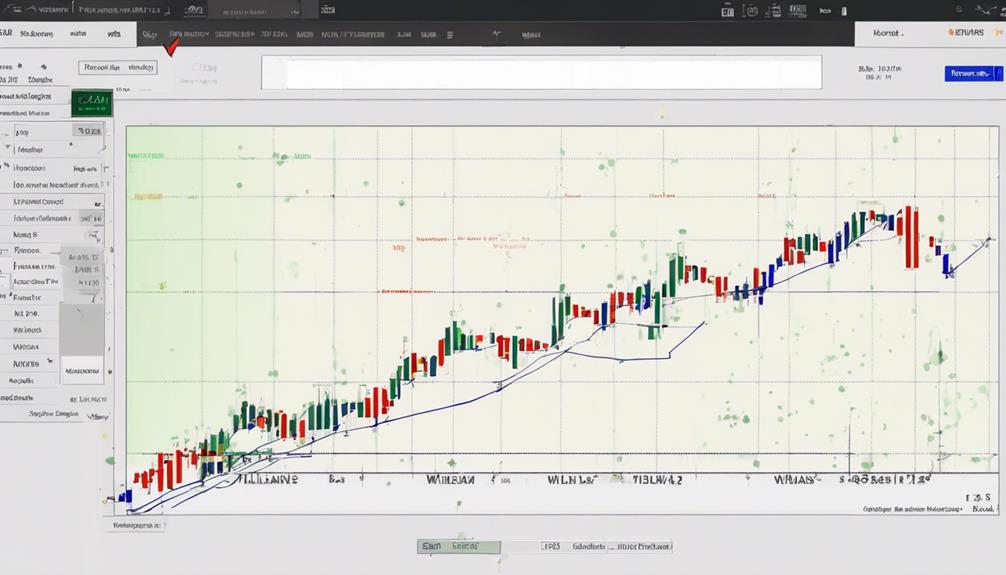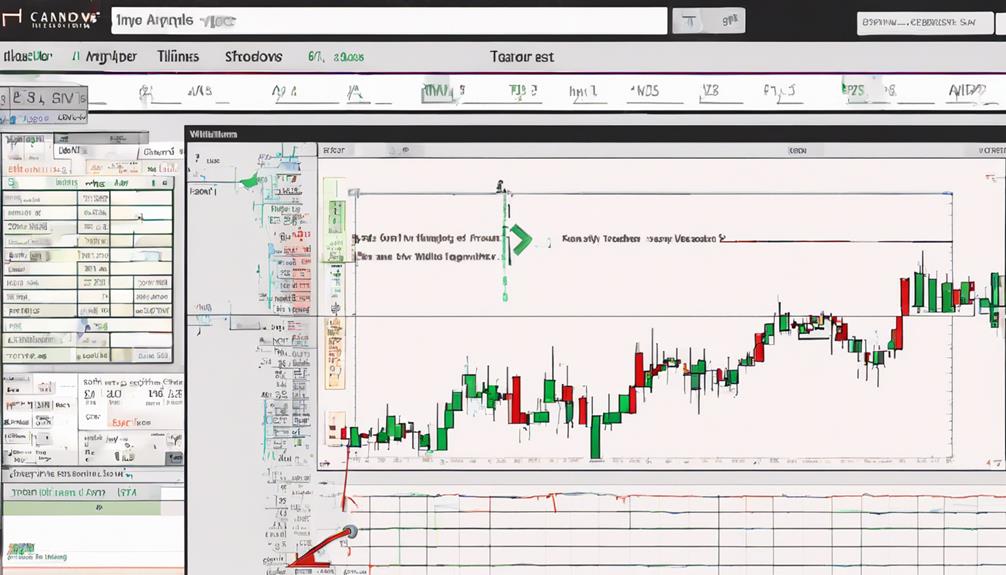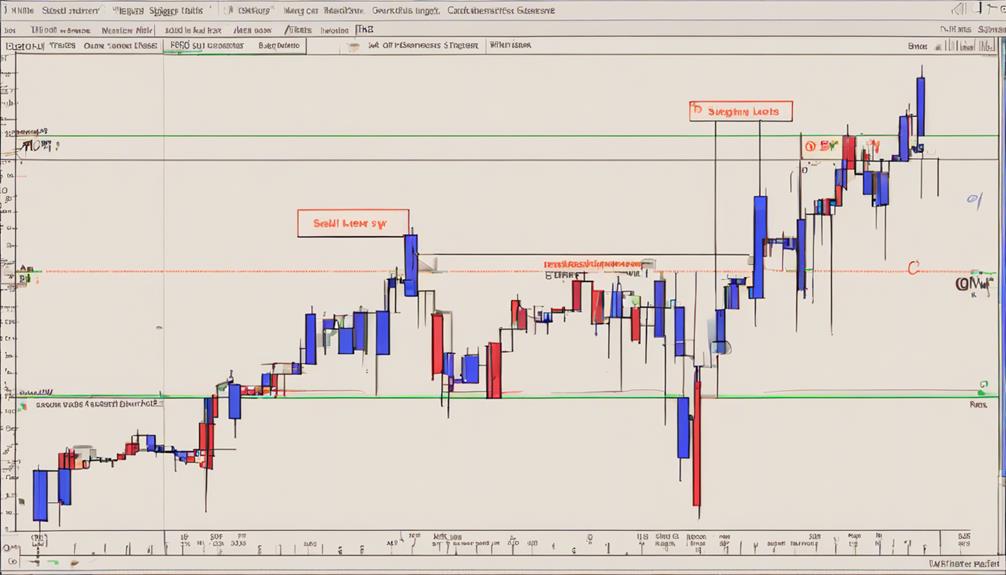The Williams %R indicator is a powerful tool in the realm of technical analysis, offering traders valuable insights into market conditions and potential price movements.
With its unique scale of 0 to -100, this indicator can pinpoint opportune moments to enter or exit trades and assess the overall market sentiment.
By grasping the nuances of interpreting Williams %R signals, traders can equip themselves with a strategic edge in navigating the complexities of the financial markets.
Understanding how to effectively utilize this indicator can be a game-changer for traders seeking to enhance their decision-making processes and optimize their trading outcomes.
Understanding Williams %R Indicator
The comprehension of the Williams %R indicator is essential for traders seeking to gauge market conditions accurately. Developed by Larry Williams, this technical analysis tool measures overbought and oversold levels in trading. With values ranging from 0 to -100, readings above -20 suggest overbought conditions, while those below -80 indicate oversold conditions.
The Williams %R indicator assesses momentum by comparing the closing price to the highest high and lowest low over a specified period, usually 14 days.
Traders use the Williams %R to identify potential trend reversals and evaluate the strength of price movements. Commonly utilized as a signal for entry and exit points, traders often set buy signals at -20% and sell signals at -80%. By analyzing the indicator's values, traders can make informed decisions regarding market entry and exit, enhancing their overall trading strategies.
Understanding the nuances of the Williams %R indicator is crucial for traders navigating the complexities of the financial markets.
Williams %R Calculation Explained

Navigating the intricacies of the Williams %R indicator involves a comprehensive understanding of its calculation method to effectively interpret market conditions and make informed trading decisions. The calculation of Williams %R incorporates the highest high, lowest low, and the closing price over a specified period, typically 14 days. This formula, ((Highest High – Close) / (Highest High – Lowest Low)) * -100, helps traders gauge the momentum of prices relative to recent highs and lows, guiding them towards potential entry and exit points.
Key Points:
- Overbought and Oversold Conditions: Williams %R ranges from 0 to -100, with values above -20 signaling overbought conditions and below -80 indicating oversold conditions.
- Analyzing Price Momentum: Traders use Williams %R to assess the strength of trends and potential reversals by comparing current price levels to recent highs and lows.
- Entry and Exit Strategies: The indicator aids in identifying optimal points to enter or exit trades based on the calculated values and market conditions, enhancing decision-making processes in trading activities.
Implementing Williams %R in Trading

Implementing Williams %R in trading involves strategic utilization of calculated values derived from price data to effectively navigate market conditions and make informed trading decisions.
Traders can use Williams %R as a momentum indicator to identify overbought or oversold conditions in the market. When the indicator reaches or exceeds -20, it suggests an overbought market, while readings at or below -80 indicate oversold conditions.
By applying Williams %R, traders can determine potential entry and exit points, especially when the indicator crosses these extreme levels. Additionally, Williams %R can help traders gauge the strength of a trend and identify key support and resistance levels for more accurate trading decisions.
Understanding how to interpret Williams %R in line with investment objectives can enhance the accuracy of trading strategies and support achieving desired outcomes in the market.
Effective Williams %R Trading Strategies

Exploring effective strategies for trading with the Williams %R indicator involves a comprehensive analysis of market conditions and calculated values to optimize decision-making processes. To effectively utilize the Williams %R indicator, traders can consider the following strategies:
- Identify Overbought and Oversold Conditions: Utilize the Williams %R indicator to recognize overbought conditions above -20 and oversold conditions below -80. This can help traders pinpoint potential reversal points in the market.
- Utilize Buy and Sell Signals: Implement a strategy of buying when the Williams %R indicator moves above -80 and selling when it moves below -20. This approach can assist traders in capitalizing on market trends and maximizing profits.
- Combine with Other Technical Indicators: Enhance the accuracy of trading decisions by combining the Williams %R indicator with other technical indicators. This integration can provide a more comprehensive view of market dynamics and potential trading opportunities.
Tips for Successful Williams %R Trading

For successful Williams %R trading, integrating risk management strategies and considering market context alongside fundamental analysis is crucial. Traders use the Williams %R indicator to identify potential reversal points in the market.
It is essential to understand that the indicator operates contrary to local law; when the price is near the highs, Williams %R is similar to other oscillators like the Relative Strength Index (RSI) and Stochastic Oscillator. However, it can also generate false signals, especially when an asset is in oversold territory.
To mitigate this risk, it is recommended to use Williams %R in conjunction with other technical indicators for confirmation of trading signals. Additionally, implementing proper risk management strategies is of the highest importance to protect trading capital.
Is There Any Difference Between the Two Comprehensive Guides to Navigating Williams %R Indicator?
Yes, there is a difference between the two comprehensive Williams %R indicator guides. Each guide offers unique insights and strategies for effectively using the comprehensive Williams %R indicator. It’s important to explore both guides to gain a comprehensive understanding of how to navigate this powerful indicator.
Frequently Asked Questions
What Is the Best Setting for Williams %R?
The best setting for Williams %R depends on market conditions, trader preferences, and trading strategies. Experimenting with different thresholds and periods can help identify optimal parameters. Consider market volatility and signal frequency for effective settings.
What Is the Difference Between William %R and Rsi?
While RSI gauges the magnitude of recent gains and losses on a scale of 0-100, Williams %R measures the close relative to the highest high on a scale of 0 to -100. Both aim to pinpoint overbought and oversold conditions.
What Is a Bullish Williams R Pattern?
A bullish Williams %R pattern is identified when the indicator crosses above -50, signaling a potential upward price movement and increasing buying pressure. Traders may see it as a sign to consider long positions or maintain existing bullish trades.
What Is the Williams Range Strategy?
The Williams Range Strategy is a method employed by traders to identify overbought and oversold conditions in the market by interpreting extreme %R readings. It aids in pinpointing potential trend reversals and determining entry/exit points for trades.
Conclusion
In conclusion, the Williams %R indicator serves as a valuable tool for traders seeking to navigate market conditions effectively.
By understanding its calculation process, interpreting signals, and implementing appropriate trading strategies, individuals can make informed decisions to enhance their trading performance.
Success in utilizing the Williams %R indicator lies in meticulous analysis, strategic planning, and disciplined execution, leading traders towards profitable outcomes in the complex world of financial markets.
